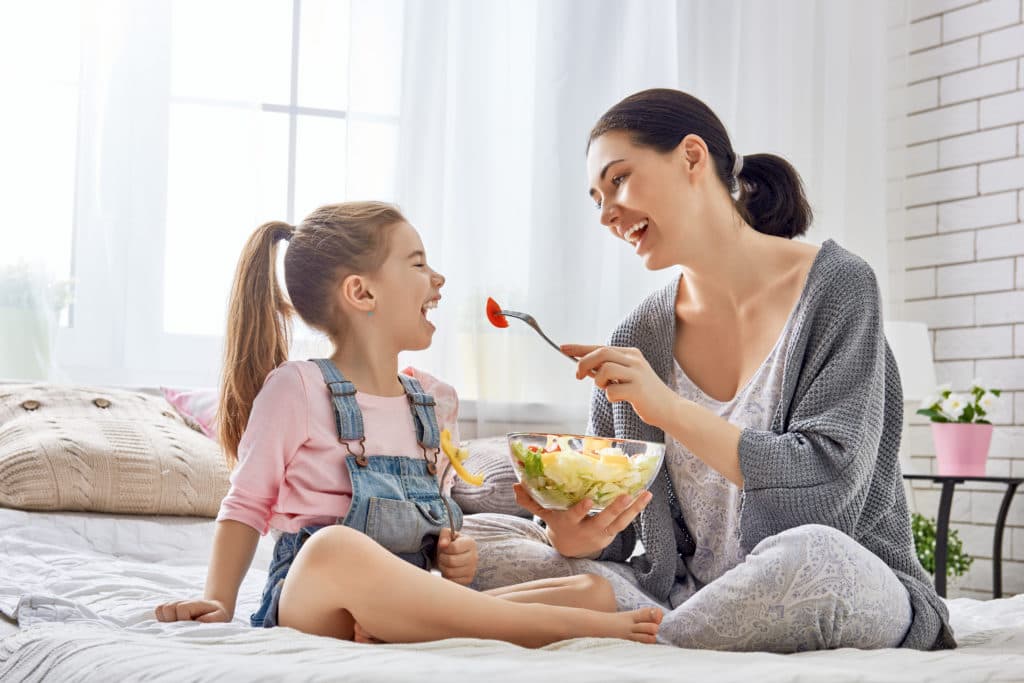The history of snacking
Over the past decade there have been a number of increasing trends when it comes to food, health and children. However harmless they may seem, some of these trends have become major contributors to the growing rates of obesity, disease risk and developmental challenges observed in children.1
It is interesting that we live in an age where we can eat and drink what we want, when we want, yet in societies of edible abundance, children these days are simply not getting enough of the right nutrients to support their healthy physical, mental and emotional development. But what exactly is it about the modern diet that has left them so depleted?
One of the biggest manipulators of modern eating habits is the commercialization and popularization of a seemingly normal component of today’s commonplace dietary habits; snacking.
In recent decades, snacking as an activity has increased in Western populations for all age groups, resulting in up to a doubling of consumption of energy-dense, low-nutrient ‘snack’ foods.2 This change in meal patterns is due to a variety of influences, however, some of the key reasons why snacking has become more prevalent is because of various elements such as dual-working parents, increased incomes giving families more opportunity to buy foods and beverages outside the home, fewer family meals being consumed at home, urbanization and the increase in food availability and affordability.3
Beyond this, there is a lack of rules around what comprises a suitable snack in comparison to what is considered the important components of main meals, meaning that as a whole we are making poorer food choices more frequently, and teaching these habits to our children and youth.
Snacking concerns
Snacking, referring to food consumed outside of mealtimes, is estimated to contribute to 35% of total energy intake4 for over 95% of Australian children (aged 2-6 years).3 Since 1995, the rate of children snacking four or more times per day has more than doubled.Not surprisingly, obesity rates have increased during this time from 20.9% to 27.4%.3
But perhaps snacking would not be of such concern if it weren’t for the implications this has on nutrient consumption. With more of our children’s daily energy coming from snacking, there has been a concurrent decrease in energy consumption from main meals. This has major repercussions as main meals are traditionally nutrient-rich. Therefore, fewer main meals, means fewer nutrients.3
According to the Australian National Nutrition Survey from 2011-123 the top 10 most consumed snack foods included sweet biscuits, bread, cakes, muffins, scones and cake-like desserts, savory biscuits, mixed dishes with cereal as the major ingredient, potato snacks and cereal-based or muesli bars. Fruits appeared only twice on the list ranking second and tenth. No protein or vegetable items were listed. It comes as no surprise, then, that in 2014-15, only 68.1% of children met the recommended guidelines for daily serves of fruit, 5.4% met the recommended serves of vegetables, and even less than that (5.1%) met both recommendations.

Smart snacking
Snack time as a concept, is not inherently evil. And it does not necessarily have to mean increased obesity and morbidity. It is merely what we have turned snacking into as a society that has enabled these outcomes. In fact, if utilized correctly, snacking can be utilized as a valuable tool for helping to teach kids about intuitive eating, and if executed effectively, can help to add nutrients to the diet, rather than deplete them, as well as wage the war on exhausting mealtime battles. But teaching our kids about smarter snacking, means we may have to re-educate ourselves on feeding tactics, hunger signals and intuition.
While well-meaning parents may incorporate techniques to limit their child’s consumption of unhealthy snacks, research has found that certain parental controls over feeding activities inhibits a child’s ability to self-regulate their own eating, and often has the contradictory outcome of increasing a child’s desirability and preference for restricted foods.6 Losing the ability to self-regulate, or intuitively eat, also means eating based on situational and emotional triggers rather than eating based on physiological hunger and satiety cues, which are associated with better health outcomes and psychological wellbeing.7
Snacking intuitively
Intuitive eating was conceived in the 90s as a non-diet approach to eating, in a bid to tackle the obesity epidemic.8 The idea behind it stemmed from the notion that when listened to, the body intrinsically determines the quantity and type of food to eat to support a healthy nutritional status and weight. And science has since backed this up with research consistently demonstrating a positive association between intuitive eating, a lower body mass index (BMI) and better psychological health.8
What’s most interesting is that children are born with this internal mechanism to help them regulate their food requirement and consumption. It is a skill that is unlearnt through observation of parental feeding patterns and restrictive feeding strategies.7
Parent feeding strategies refers to the ways in which parents manage what, when and how much their child eats.6
There are two key types.
Firstly, restrictive feeding strategies, which limit the amount and portion sizes of certain foods, using food as a reward and monitoring a child’s intake of certain food.
Secondly, there are covert feeding strategies, where parents alter a child’s immediate environment to influence the consumption or avoidance of certain foods. This could mean such activities as limiting the amounts or types of unhealthy food in the house and preventing a child’s exposure to places or shops that sell unhealthy foods.6
Research has repetitively demonstrated that restrictive feeding strategies increase unhealthy snack intake in children, whereas covert feeding strategies reduce unhealthy snack consumption.6,9,10
What does this mean for snack time then? By keeping healthier snacks in the house and proactively encouraging children to intuitively determine their own hunger and appetite, they will make healthier food choices without our interference. It means children will learn to listen to their innate cues rather than determining their hunger by the hands on the clock and their satiety by the emptiness of their plates. And the benefits of this exceed the benefits of improved nutrient intake, as these eating behaviors become the premise of their adolescent and adult relationships with food.8
Helping parents to support kid’s healthy snacking habits
It is easy to create healthy snacks for kids that taste great and also boost their nutritional intake with simple food swaps (see below)and easy supplemental additions. Kids Good Stuff is a dietary supplement that has been designed with children’s needs in mind. It’s packed full of protein, probiotics and essential vitamins and minerals to provide comprehensive nutritional support—all in a tasty drink that kids love!

Food swaps to create healthy eating habits:
For this: A tasty flavored kid’s shake made from Kids Good Stuff. Available in three yummy flavors: vanilla caramel, wild strawberry and rich chocolate.
Swap this: Ice cream
For this: Homemade frozen yogurt sticks filled with fruit (you can always add a scoop of Kids Good Stuff for the ultimate nutrient boost at snack time).
Swap this: Chips or crisps
For this: Air popped popcorn with a sprinkling of flavor, such as salt or smoked paprika for a hint of BBQ.
Swap this: Chocolate breakfast cereal
For this: Wholegrain breakfast cereal such as our Chocolate Overnight Oats.
Swap this: Savory biscuits
For this: A healthy snack alternate such as our Choc-Peanut Bites.
Conclusion
Perhaps then, all we need is to reimagine the world of ‘snack foods’ and to prevent snack time from becoming an occasion to overindulge in nutrient-poor foods.13 If snacks were nutritively comparable to breakfast, lunch or dinner, every meal of the day would offer a broad variety of important micronutrients, and would reduce stress and tension around mealtimes, all the while empowering children with intuitive eating skills. And by incorporating covert feeding strategies, the need to make any direct comment or fuss around our children’s eating habits will diminish.6
Crucially, establishing these healthy eating practices in early life would help create habits our children could carry with them through adolescence and adulthood. These tools would promote healthy growth and development, prevent their future risk of chronic disease5 and would become the skills they pass on to the benefit of future generations.

































